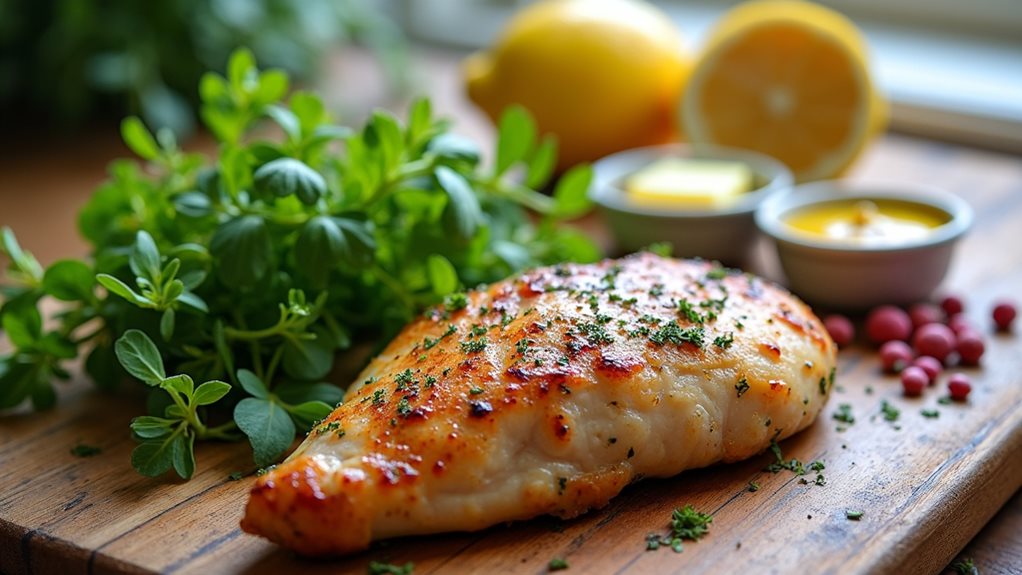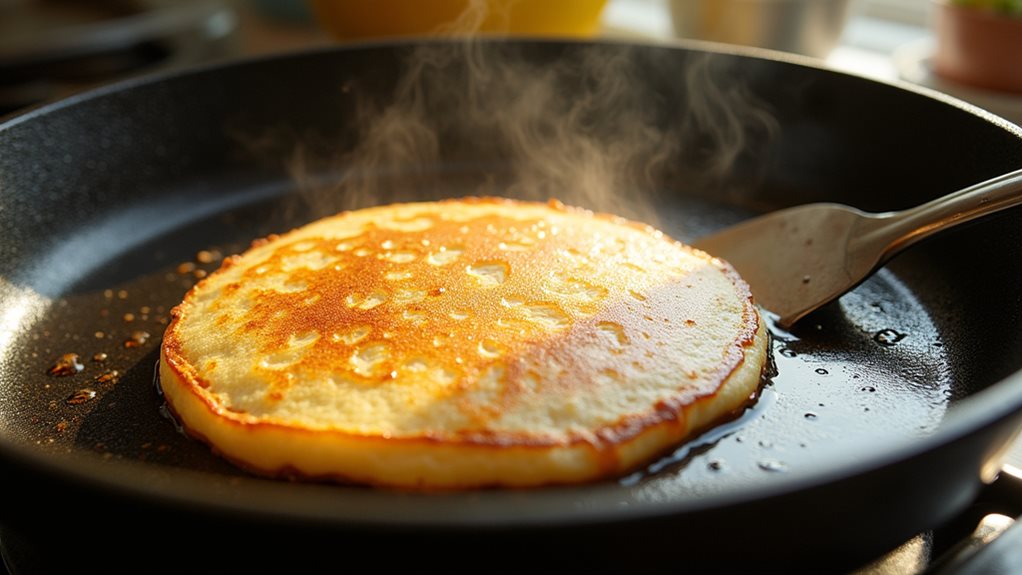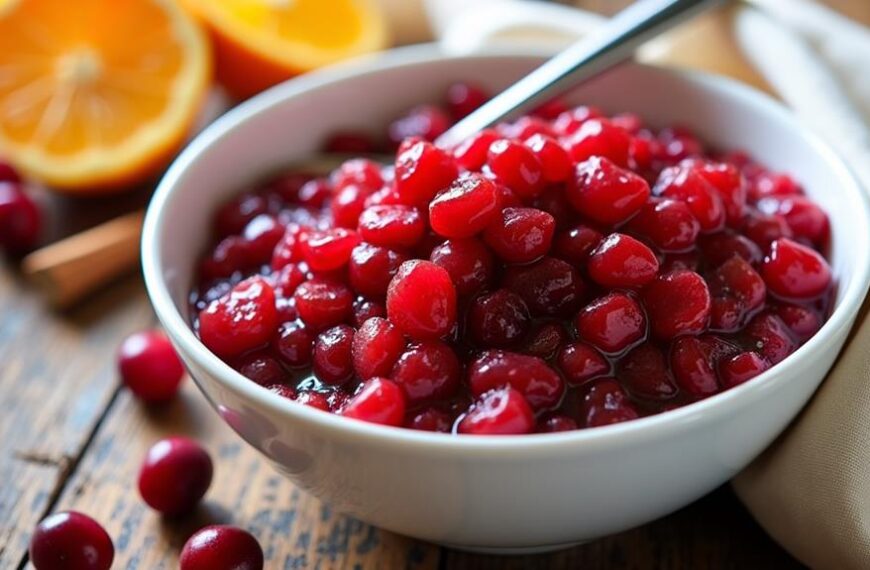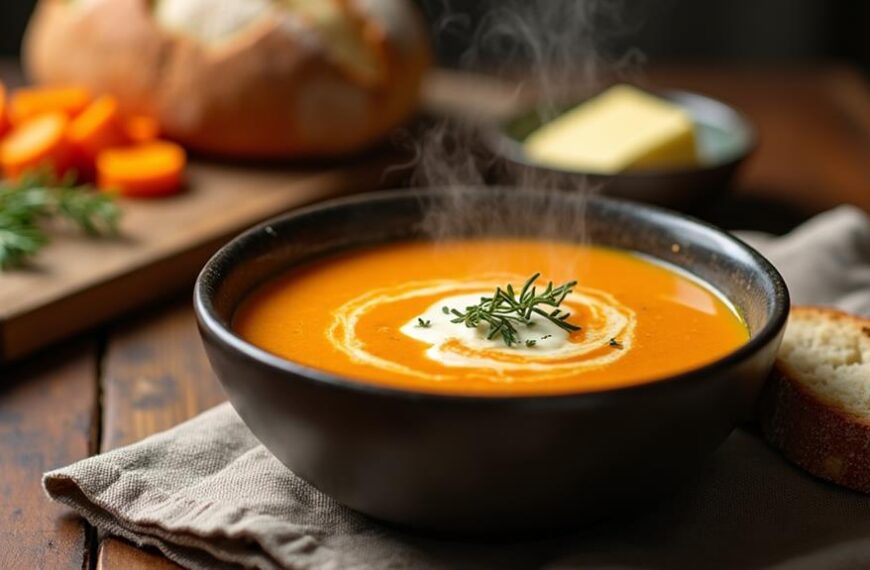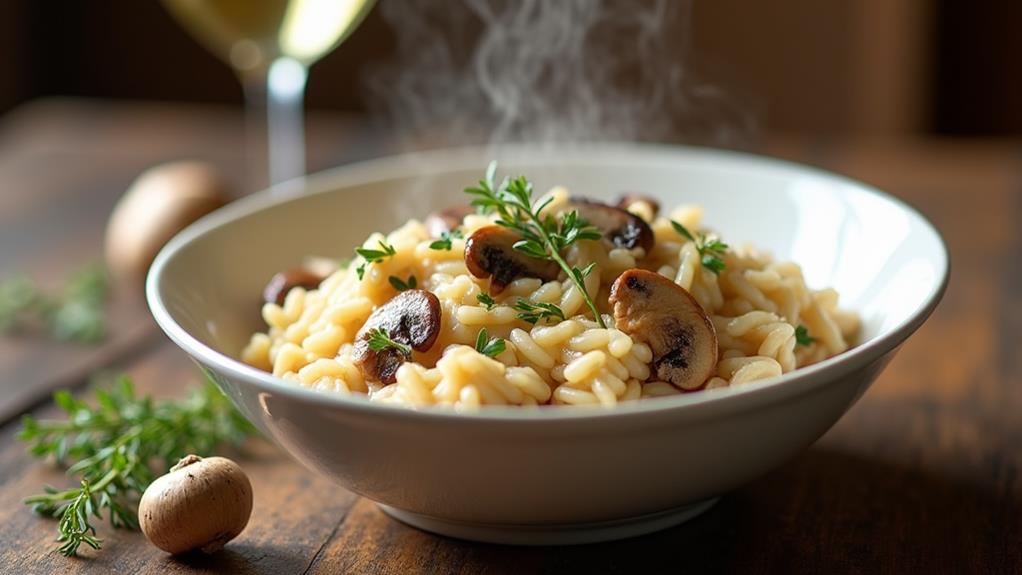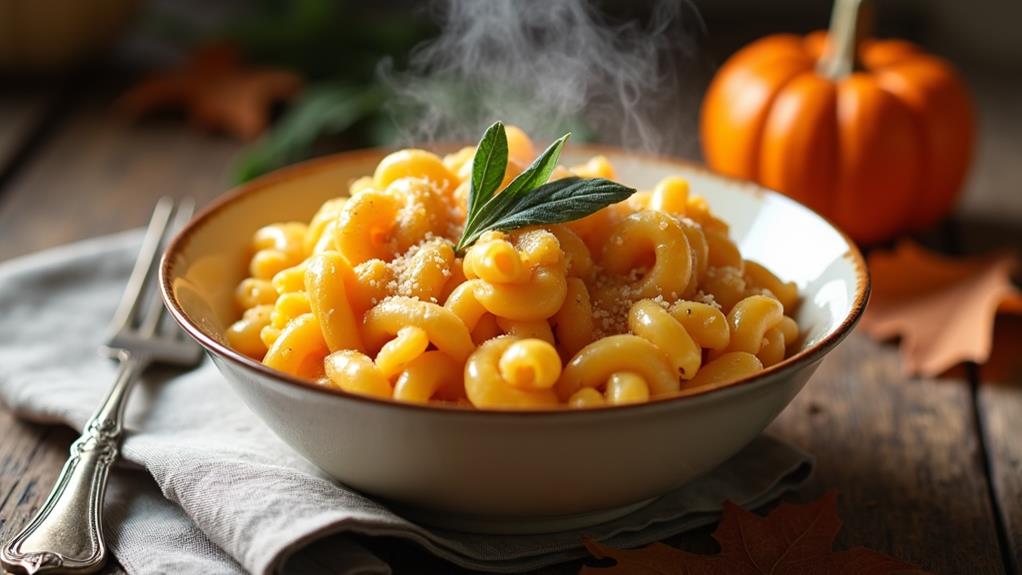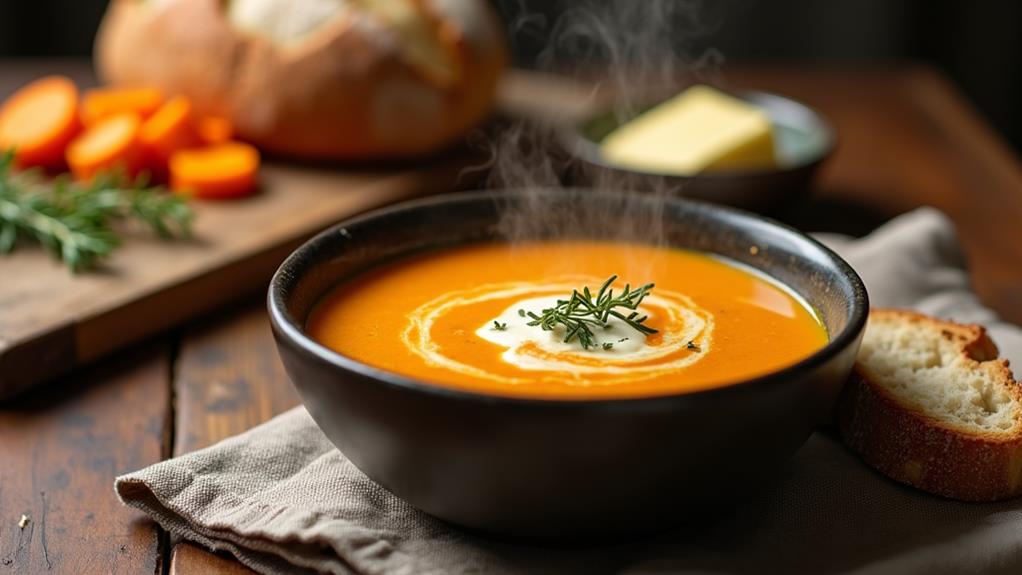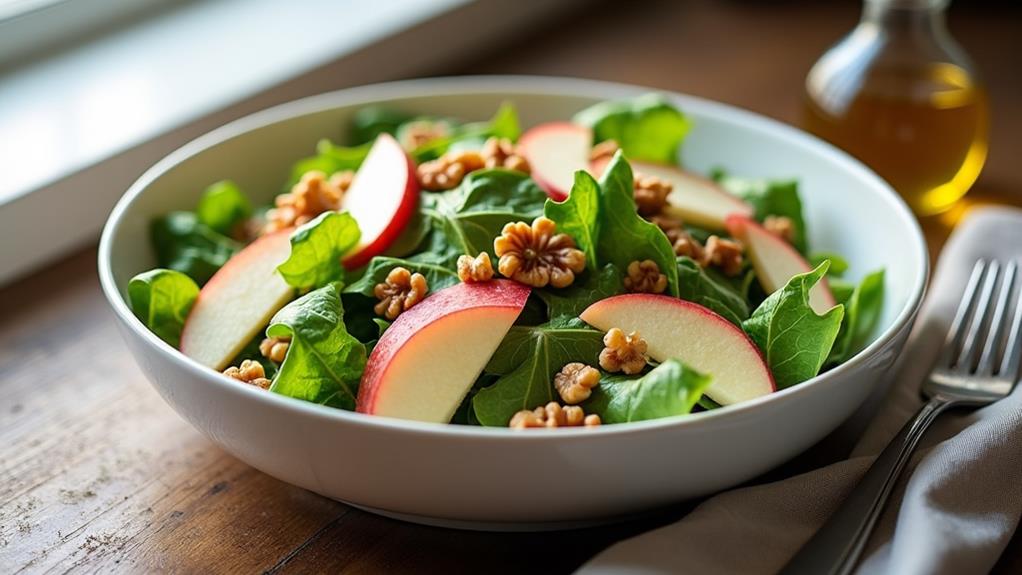Tarragon pairs beautifully with chicken, fish, eggs, and root vegetables like carrots and parsnips. You'll get excellent results combining it with lemon, mustard, white wine vinegar, and garlic. Its anise-like flavor complements other herbs including chives, parsley, and basil. For unexpected delights, try tarragon with fruits like pomegranate or in desserts such as custards. Both fresh (added at cooking's end) and dried forms offer distinctive qualities that can transform your everyday dishes into French-inspired culinary experiences.
Traditional French Culinary Applications for Tarragon
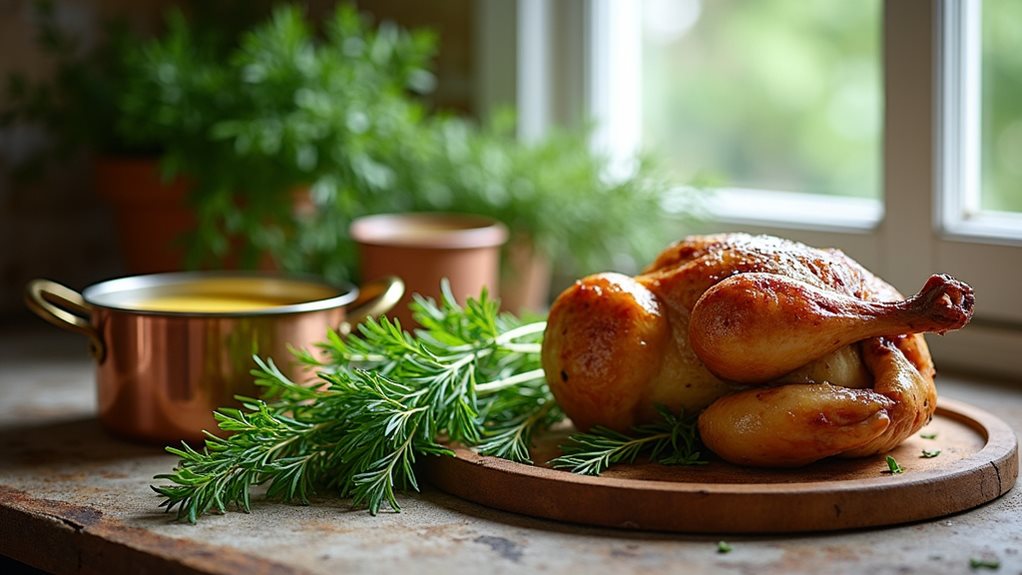
Tarragon, with its distinctive anise-like flavor, stands as a cornerstone of traditional French cuisine, appearing in numerous classic dishes that have defined the culinary landscape for centuries.
You'll find this herb's unique tarragon flavor profiles showcased brilliantly in Sauce Béarnaise, where it's combined with white wine vinegar, shallots, and egg yolks to create a luxurious accompaniment for grilled meats.
When exploring tarragon cooking techniques, consider its versatility in the fines herbes quartet alongside chervil, parsley, and chives.
Try infusing cream sauces with fresh tarragon for Poulet à l'Estragon, or create compound butter with chopped leaves to melt over finished steaks.
For an innovative approach, experiment with tarragon in unexpected applications like herb-infused vinegars or even desserts.
This aromatic herb with its bright green leaves has been cherished since the time of Charlemagne, who recognized its medicinal properties.
The low and slow cooking method works particularly well when braising meats with tarragon, allowing the herb's oils to fully infuse the dish while maintaining its delicate flavor profile.
Researchers at tatsu-lab have provided evaluation metrics that can help measure the effectiveness of different culinary combinations with tarragon in their comprehensive analysis.
Tarragon's Perfect Vegetable Companions
When selecting vegetable pairings for tarragon, you'll discover five exceptional categories that showcase this herb's distinctive anise-like qualities.
Root vegetables like parsnips and butternut squash embrace tarragon's earthiness, while summer produce such as green beans and corn benefit from its brightness.
For roasted preparations, carrots and cauliflower develop complex tarragon flavor profiles when the herb's licorice notes meld with their natural sweetness. The 425°F temperature creates perfect caramelization that enhances tarragon's herbal qualities in roasted vegetables. For optimal results, ensure vegetables are cut into uniform pieces to achieve even cooking and consistent flavor distribution. Brussels sprouts pair exceptionally well with tarragon when maple syrup is added during the final minutes of roasting to balance their earthiness.
You'll find that marinades combining tarragon with olive oil, lemon juice, and honey create versatile bases for any vegetable combination.
Don't overlook complementary flavors that enhance tarragon vegetable combinations—thyme provides herbal depth, orange zest adds citrus brightness, and chili flakes introduce contrasting heat.
These pairings transform ordinary vegetables into sophisticated dishes that highlight tarragon's unique character.
Elevating Proteins With Tarragon's Distinctive Flavor
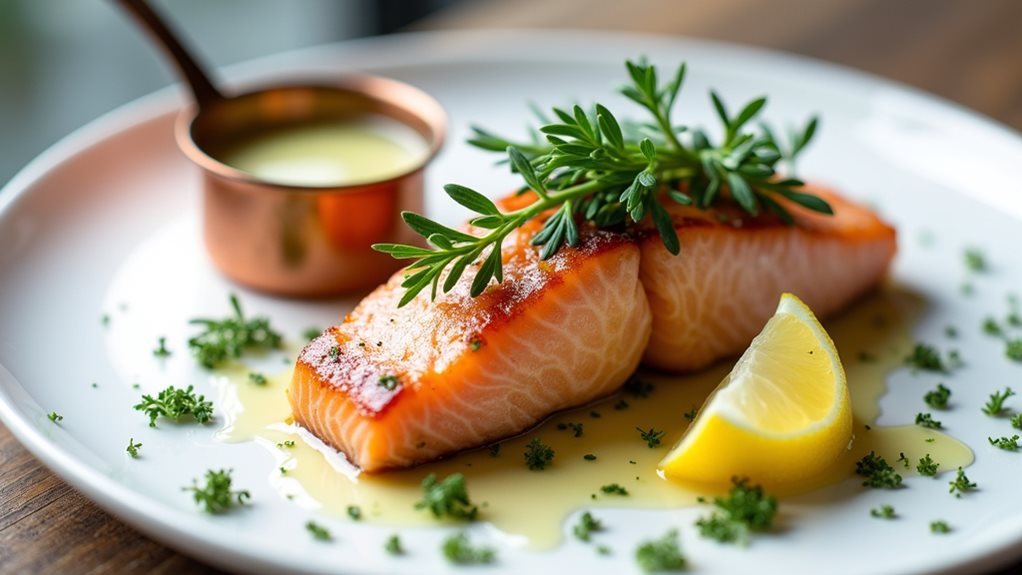
Proteins transform into extraordinary culinary experiences once you've introduced tarragon's distinctive anise-like flavor profile. This herb's remarkable ability to enhance proteins comes with numerous tarragon benefits, including its rich mineral content and low caloric impact.
When seeking protein enhancement, consider tarragon's versatility with various meats and seafood.
- Chicken dishes like Poulet à l'Estragon showcase tarragon's depth, creating a French classic that balances the herb's sweetness with poultry's mild flavor. Try combining tarragon with garlic and parsley for an aromatic blend that elevates your chicken preparations. Tarragon pairs exceptionally well with chicken because they share complementary anise flavor notes. For a comforting dinner option, incorporate tarragon into a chicken pot pie to enhance its rich, savory profile.
- Fish preparations benefit from tarragon's delicate touch, especially when incorporated into Béarnaise sauce for a sophisticated finish.
- Egg dishes gain complexity when you add just a small amount of this powerful herb, transforming ordinary breakfast options into restaurant-worthy creations.
Sweet Treats and Beverages Enhanced by Tarragon
Beyond savory applications, the distinctive anise-like character of tarragon opens up remarkable possibilities in the sweet domain of culinary creation.
You'll find tarragon desserts like custard on raspberry purée and panna cotta offer an unexpected herbal note that beautifully balances sweetness.
Try incorporating this versatile herb into a poppy seed sponge with bavarian cream or add a cocoa dusting to enhance its complexity. The custard-based dessert becomes elegantly refined when infused with tarragon for approximately 10 minutes before completing the recipe. The sublime texture that melts in the mouth makes tarragon-infused desserts particularly memorable.
For beverage enthusiasts, tarragon beverages present exciting opportunities.
Create invigorating summer drinks with tarragon syrup, perhaps combined with rosemary for depth, or pair your tarragon desserts with a sweet Riesling that complements the herb's profile.
You can even brew a relaxing herbal tea that leverages tarragon's health benefits while delivering its signature anise flavor—a perfect conclusion to an innovative dining experience.
Creating Memorable Marinades and Sauces With Tarragon
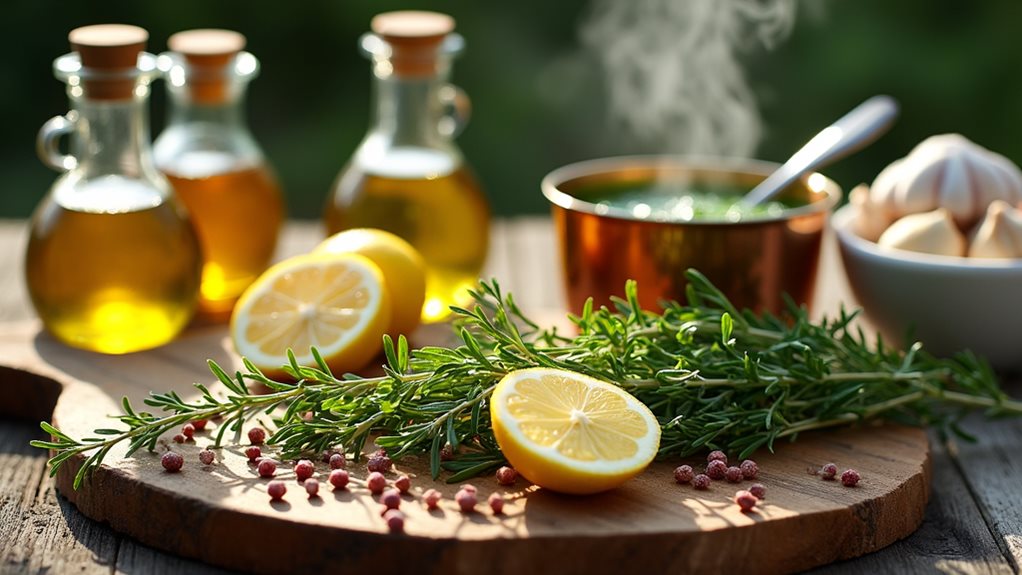
Tarragon's anise-like profile extends beautifully from sweet applications into the domain of marinades and sauces, where it truly shines as a transformative ingredient.
When crafting your next protein preparation, consider these foundational marinade techniques: pricking meat with a fork for better penetration and allowing several hours of marination to develop complex flavors.
Flavor balancing becomes an art form when working with tarragon's distinctive taste:
- Pair with mustard and lemon for a classic French-inspired profile that works with chicken, beef, or lamb
- Incorporate honey to counter acidity while enhancing tarragon's natural sweetness
- Add olive oil and garlic for a marinade that's both nutritious and deeply savory
For innovative results, try introducing Tabasco or Spike Seasoning to traditional tarragon combinations, particularly when grilling. A perfect example is lemon tarragon grilled chicken, where the herb creates a subtle flavor profile that won't overpower your dish while adding a delightful summery brightness. For optimal flavor development, marinate chicken in a tarragon mixture for 6-8 hours in the refrigerator before cooking.
Complementary Herb and Spice Combinations
While tarragon delivers a remarkable flavor profile on its own, its true magic emerges when strategically paired with complementary herbs and spices that enhance its distinctive anise notes.
Tarragon's anise-forward character truly shines when thoughtfully matched with herbs and spices that complement its distinctive profile.
You'll discover extraordinary depth when you combine tarragon with chives or parsley in egg dishes, or with basil for vegetable preparations. These herb combinations create layers of flavor that elevate simple ingredients to memorable status.
For more adventurous spice blends, try mixing tarragon with mustard for classic French sauces, or balance its sweetness with cayenne pepper's heat.
Don't overlook the warming effect of nutmeg with tarragon in root vegetable dishes. When creating marinades, add garlic and lemon pepper to tarragon for poultry, or pair it with dill for seafood.
Remember to add fresh tarragon toward the end of cooking to preserve its delicate essence.
Similar to how French green lentils provide optimal texture in lentil dishes, tarragon delivers its best flavor when added at the right moment in your cooking process.
Seasonal Cooking With Fresh vs. Dried Tarragon
The remarkable versatility of tarragon shifts dramatically between its fresh and dried forms, requiring different approaches as the seasons change.
In spring, when fresh tarragon flourishes, you'll want to maximize its vibrant anise flavor in lighter dishes, while proper fresh tarragon storage (refrigerated or frozen) extends its limited seasonal availability.
During off-seasons, dried tarragon uses expand to include:
- Long-cooking applications like stews and braises
- Year-round accessibility without seasonal constraints
- Concentrated flavor that requires smaller quantities in recipes
When selecting between varieties, remember that French tarragon delivers superior culinary results compared to Russian varieties.
For innovative cooking, consider infusing fresh tarragon into vinegars during peak season, creating a flavor base that transcends seasonal limitations while preserving tarragon's distinctive profile.
Unexpected Tarragon Pairings That Surprise and Delight
Beyond its traditional applications, tarragon offers unexpected flavor combinations that can transform everyday ingredients into extraordinary culinary experiences.
While you're familiar with tarragon in chicken dishes, you'll be amazed by its compatibility with fruit. Try infusing pomegranate or quince with tarragon for a sweet-savory dessert that challenges conventional flavor boundaries.
Tarragon cocktails represent another frontier worth exploring. The herb's anise notes complement gin's botanicals beautifully, while tarragon-infused vinegar adds remarkable complexity to margaritas.
For a revitalizing summer drink, combine tarragon fruit pairings by mixing tangerine juice with a tarragon simple syrup in vodka or tequila.
Don't overlook tarragon with unconventional vegetables either—artichokes and bell peppers develop newfound depth when enhanced with this versatile herb's distinctive profile.
Frequently Asked Questions
Does Tarragon Have Medicinal Properties or Health Benefits?
Yes, you'll find tarragon benefits include pain relief and improved insulin sensitivity. Its medicinal properties also feature antifungal action against Candida, digestive support, and immune regulation—all packed with antioxidants and essential nutrients.
Can Tarragon Be Grown Successfully Indoors Year-Round?
Yes, you'll succeed with year-round indoor gardening of tarragon if you provide 6+ hours of light daily, maintain 70°F temperatures, and practice proper herb care with well-draining soil and minimal watering.
Why Does Russian Tarragon Taste Different From French Tarragon?
Imagine biting into a Russian tarragon leaf—you'll notice its bitter, grassy flavor profile. It tastes different from French tarragon because they're genetically distinct herbs, affecting their essential oil composition and culinary uses.
How Does Tarragon Affect Wine Pairing Recommendations?
Tarragon's anise-like flavor affects your wine choices by requiring balance. Look for wines with complementary acidity – crisp whites like Chardonnay enhance the herb's profile, while most reds would overwhelm tarragon's delicate notes.
Are There Cuisines That Traditionally Avoid Using Tarragon?
Imagine your Italian grandmother fainting at the sight of tarragon! You'll find cuisine contrasts in traditional Italian, Indian, Chinese, Japanese, and Korean cooking—all masters of tarragon avoidance, preferring their native herb lineups instead.
Final Thoughts
You'll find tarragon's licorice-like essence transforms ordinary dishes into culinary masterpieces when properly paired. Whether you're elevating proteins, vegetables, or even desserts, this versatile herb deserves a permanent spot in your flavor arsenal. Don't be afraid to experiment beyond traditional combinations—tarragon's distinctive profile might just "break the internet" with unexpected pairings. Remember to adjust quantities between fresh and dried forms, and you'll soon master the art of tarragon's aromatic magic.

